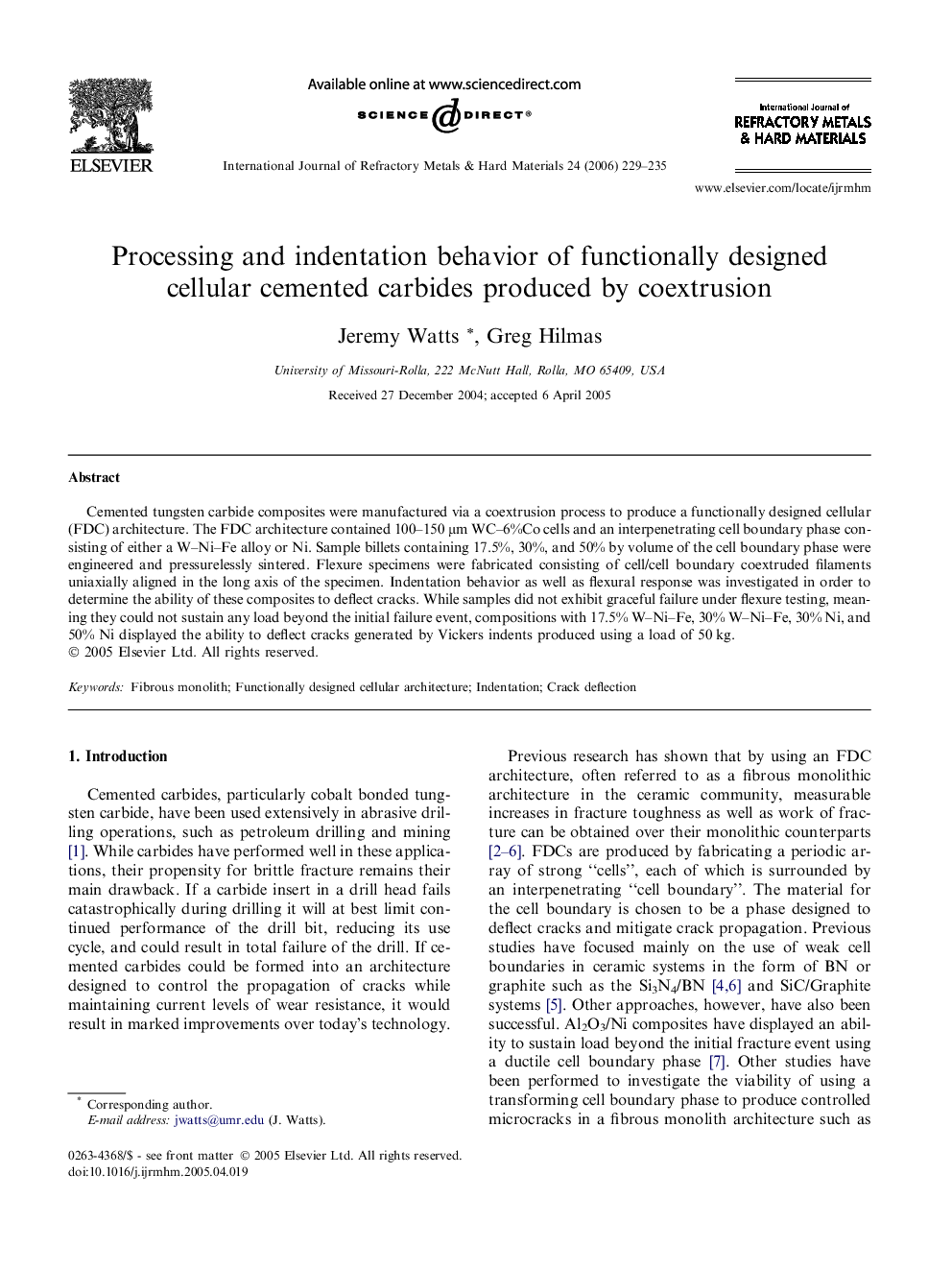| Article ID | Journal | Published Year | Pages | File Type |
|---|---|---|---|---|
| 1604834 | International Journal of Refractory Metals and Hard Materials | 2006 | 7 Pages |
Cemented tungsten carbide composites were manufactured via a coextrusion process to produce a functionally designed cellular (FDC) architecture. The FDC architecture contained 100–150 μm WC–6%Co cells and an interpenetrating cell boundary phase consisting of either a W–Ni–Fe alloy or Ni. Sample billets containing 17.5%, 30%, and 50% by volume of the cell boundary phase were engineered and pressurelessly sintered. Flexure specimens were fabricated consisting of cell/cell boundary coextruded filaments uniaxially aligned in the long axis of the specimen. Indentation behavior as well as flexural response was investigated in order to determine the ability of these composites to deflect cracks. While samples did not exhibit graceful failure under flexure testing, meaning they could not sustain any load beyond the initial failure event, compositions with 17.5% W–Ni–Fe, 30% W–Ni–Fe, 30% Ni, and 50% Ni displayed the ability to deflect cracks generated by Vickers indents produced using a load of 50 kg.
